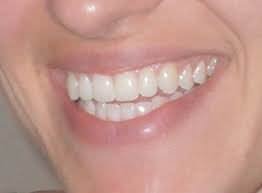A Beautiful Smile
A beautiful smile is a joy to behold and a real asset to the person so blessed since it adds immensely to a person’s attractiveness and gains them instant acceptance in any social situation. Having a pleasant smile with even white teeth can also make you more employable in any area of work that has to do with meeting other people.

We instinctively recognize a beautiful or attractive face when we see it, and we do so apparently, because such a face fits in with an age old concept that was discovered by both the Egyptians and the Greeks. It is all to do with proportion and symmetry which have mathematical rules underlying. The Greeks referred to the concept of the “golden ratio”, sometimes called the “golden proportion” or just the Greek letter “phi”
We now know that the basis of “beauty” as appreciated by humans is mathematical, and that a face that we regard as aesthetically pleasing is one that exhibits both symmetry and proportion. The golden ratio eye has been determined to be 1:1.61, or thereabouts, and amazingly this ratio is seen to occur throughout the natural world in the configuration of both plants and animals. The so-called “golden rectangle” is a rectangle that respects the rules of phi and contains an infinite number of proportional golden rectangles within itself. The ancient Greeks recognized this proportion, and that it’s related to the Fibonaccci numbers. They utilised this knowledge to good effect in the design of beautiful architecture still appreciated today for its inherent aesthetic appeal.
When it comes to the human face we see the golden proportion in evidence. The human head itself is generally just over one and a half times longer than its width and the spacing of all the main features fit in nicely with the magical ratio of approximately 1.62. The eyes, for example, are an important aesthetic feature of the face and they are located in the ratio of width to height in accordance with phi. The width of the eyes themselves and the distance between the eyes is also in accordance with the golden ratio.
A beautiful smile normally implies full lips with gleaming white teeth that are perfect and without blemish. More than that however, is the more subtle proportion that the perfect smile displays whereby the golden ratio is evident in several ways.

The two upper front incisor teeth are in the form of the golden rectangle with the ratio of height to width. Furthermore the width of the first central incisor tooth compared with that of the second lateral incisor is also in line with the golden ratio. This ratio is carried on throughout the various proportions of teeth compared with each other and to the corners of the mouth, so that the face is a composite of features all in similar proportion.
You may have noticed, and any good cosmetic dentist will know, that the four upper front teeth are not all of the same length; the two main incisors are slightly longer than the next incisor on each side. It may well be the case that the older person has suffered wear of the two front incisors and then the teeth will all look the same, but this is not what nature intended...
The front incisor teeth should also be slighter longer than wide in the golden proportion. If they are too square when replaced with crowns or a bridge by a dentist then they will look false. Only if crowns or bridges are made in accordance with the rules of phi will they look as natural as possible.
Modern crowns and bridges can look very life-like indeed but there is a practical issue in respect of the materials involved. Some dentists tend to prefer to make their crowns and bridges with a precious or semi-precious metal backing or core, thus making them stronger and less likely to break.
One aesthetic disadvantage of this is that such restorations, whether they are crowns or bridges, can look rather flat, since they reflect light but do not transmit any light through. Natural front teeth are not completely opaque but rather allow some degree of transparency.
This desirable effect can be achieved to a degree by using all-porcelain or sintered glass without any metal to make the crown or bridge. Modern materials have improved strength generally though, so that a good aesthetic result can usually be achieved along with adequate strength.
If you are not fortunate enough to be naturally blessed with a lovely smile then a good cosmetic dentist can probably help you achieve it, although it’s as well to fully discuss the procedures necessary thoroughly before committing to complex or expensive dental work to make sure that the final result will meet your expectations.